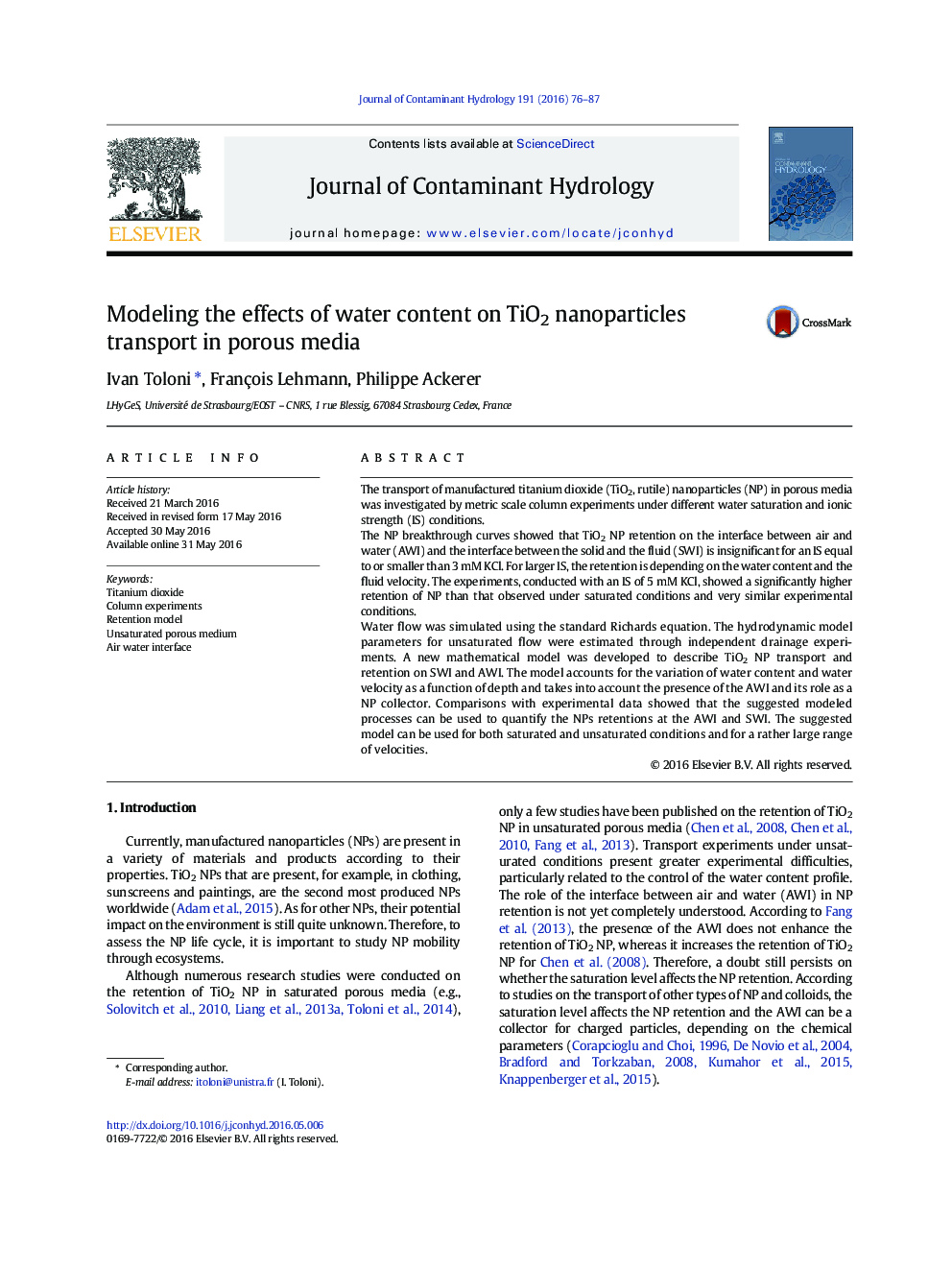| Article ID | Journal | Published Year | Pages | File Type |
|---|---|---|---|---|
| 4546348 | Journal of Contaminant Hydrology | 2016 | 12 Pages |
•NP transport experiments under unsaturated water conditions•Retention effect of the air-water interface•Unsaturated water flow simulation•Retention model with air-water interface for unsaturated NP transport•NP retention model taking into account the water saturation profile
The transport of manufactured titanium dioxide (TiO2, rutile) nanoparticles (NP) in porous media was investigated by metric scale column experiments under different water saturation and ionic strength (IS) conditions.The NP breakthrough curves showed that TiO2 NP retention on the interface between air and water (AWI) and the interface between the solid and the fluid (SWI) is insignificant for an IS equal to or smaller than 3 mM KCl. For larger IS, the retention is depending on the water content and the fluid velocity. The experiments, conducted with an IS of 5 mM KCl, showed a significantly higher retention of NP than that observed under saturated conditions and very similar experimental conditions.Water flow was simulated using the standard Richards equation. The hydrodynamic model parameters for unsaturated flow were estimated through independent drainage experiments. A new mathematical model was developed to describe TiO2 NP transport and retention on SWI and AWI. The model accounts for the variation of water content and water velocity as a function of depth and takes into account the presence of the AWI and its role as a NP collector. Comparisons with experimental data showed that the suggested modeled processes can be used to quantify the NPs retentions at the AWI and SWI. The suggested model can be used for both saturated and unsaturated conditions and for a rather large range of velocities.
